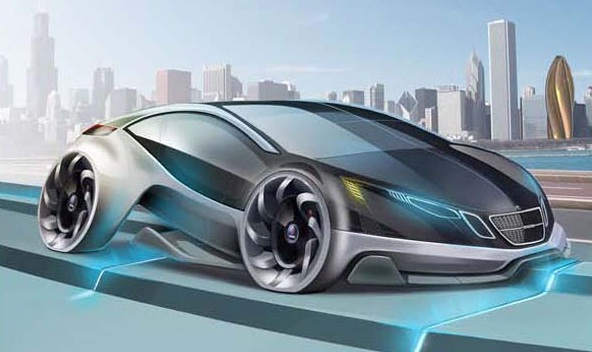Innovations and changes are inevitable part of auto industry, Modifications can be in the department of safety, usefulness, entertainment or just for the sake of innovation, but such changes in technologies have completely revolutionized the automotive industry and the mode of human transportation.
So what type of technology we can expect from the future cars? Based on the researches and innovations that are already rolled out we can assume how will be the cars of the future. Similar to every other sector, the automobile industry has also adopted the smart technology. Fully self-driven cars are yet a thing of the future, but it appears that five to ten years down the line, the cars will be able to do self-parking, communicate with other vehicles to avoid collision and evaluate the alertness of the driver.
On-board computers
Introduction of computers on the cars’ cockpit may transform the stereotypical method of driving and controlling the cars. Like any other normal computers, the one in your car will produce enormous quantity of data. Because of this heap of data, your car may be aware of where you want to go before you take it out of the driveway.
Mercedes Benz is trying to develop a system that will learn from your daily routines, nature and even your mood. When you will leave your house on a particular time of a weekday morning for dropping your kids to school, it will set the GPS by itself. Based on the satellite data, it picks up your preferred routes to the location and displays the real time situation of that path. If there is any traffic problem, it can advise you a second route that can save your time.
The car can also tune the radio to the Disney channel until the kids reach their school. There is no need to be surprised. The car technology just only tracks your daily schedule and acts on the basis of that.
Smart communication
For some times now, we have been hearing that the electronic devices will soon be able to sense and communicate with us. For example, your fridge may send a text when the milk pot is empty or your oven sends a message to you when the cake is ready. It will be great, if the same feature can be implemented in cars.
Apart, from alerting you about the road condition, traffic and weather, the cars running on the same route will also have the information of speed and direction of each other. Both of the vehicles may interact among each other and transfer messages if there is a probable collision risk when they come alarmingly close.
It is expected that this method of Vehicle-to-Vehicle communication will help to avert several automobile accidents. The method will make use of wireless signals and send information back and forth between cars.
Self-driven car
It is not a new feature in the automobile industry. Different TV shows and movies showcased the idea of self-driven car. An ideal self-driven car will need no driver and such a car may soon be a reality. In California and Nevada, Google engineers have already test drive such cars on more than 200,000 miles on roads and public highways.
It is expected that the car showrooms will soon have all sorts of self-driving cars.
Airbags
For several decades, airbags protect people in the cars from devastating accidents. Cars have airbags mounted in the seat belts, seats, side panels, steering wheel and dashboard. Though, these airbags are placed at different position of a car, but one thing is common with all of them. They are all located inside the car.
This same feature can be used outside the car to minimize the impact of an accident. Inflated airbags may save the pedestrians and your car. A camera system will detect any probable collision and convey the signals to the airbags which will inflate within milliseconds.
Monitoring the driver
A driver may feel sleepy, get distracted or may be even drunk while behind the wheel. In the worst case, he or she may even feel unwell while driving. This is the reason why app developers and car manufacturers are interested to develop a technology that will keep a close eye on the driver and help them to avoid accidents.
Advanced sensors can monitor the vital statistics like brain activity, eye movement and heart rate of a driver and will display every possible information from the heart attack to sleepiness. There will soon be a sensor to measure the level of alcohol from the driver’s sweat and the navigation system of the car will sound alarm when it will detect inconsistent driving.
There will be a host of other changes and the list is certainly long. However, whatever may be the new additions, you can expect that the future cars will be safer, smarter and environment friendly.
Image Courtesy: www.eng.mcmaster.ca
